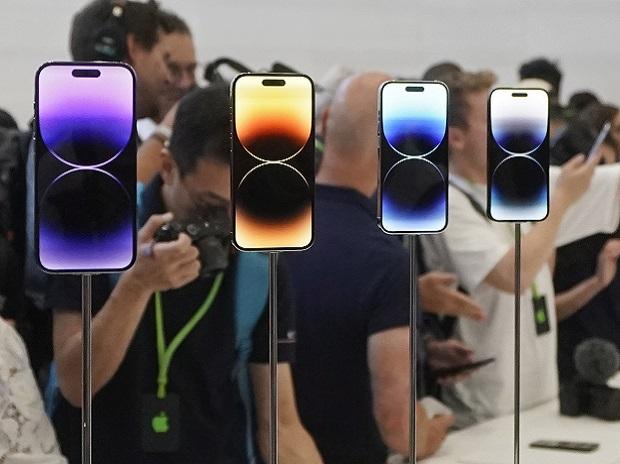What Is The Significance Of Apple's 'Make In India' Push?

.
.
In May 2016, when Apple CEO Tim Cook met Prime Minister Narendra Modi in New Delhi, he spoke about the possibilities of manufacturing and retailing in India, in line with the country’s ‘Make in India’ push.
.
The following year, the $2.5 trillion American tech giant started its manufacturing in India with the budget iPhone SE model via contract manufacturer Wistron when the phone was already more than a year old.
Since then, Apple has also enlisted Foxconn and Pegatron to make
iPhoneslocally while reducing the gap between the launch of a new model in India and its manufacture here.
.
So the iPhone 11 started rolling out of factories here in July 2020, ten months after the launch. The iPhone SE 2020 started coming out within three to four months of its launch while the production of iPhone 12 started within a lag of less than six months.
.
The first batches of the latest iPhone 14, which was announced early this month, will be made in India by late October or November, reducing the gap with
Chinato just two months.
.
China’s stringent lockdowns to control the spread of Covid-19 has disrupted electronics manufacturing and global supply chains. Its increasing political tensions with the US is making businesses adopt the ‘
ChinaPlus One’ strategy of diversifying production away from Asia’s biggest economy. Countries like India, Vietnam and Mexico have been the beneficiaries of this move.
.
On September 12th, US publication The Information reported that Google parent Alphabet is considering moving some production of Pixel phones to India.
.
Bloomberg recently reported that Tata Group is in talks with Wistron to establish a joint venture to assemble
iPhonesin India. If finalised, Tata would be the first Indian company to build
iPhones. Pegatron and Foxconn plants are located in Tamil Nadu while Wistron’s factory is in Karnataka.
.
Local demand in India, the world’s second-biggest smartphone market, has played some role in Apple’s decision to expand manufacturing capacity here. This is bolstered by the Production Linked Incentive scheme for smartphone manufacturing. All three Taiwanese Apple suppliers making iPhones in India are covered under the PLI scheme.
.
While Apple has a negligible share in India’s overall smartphone market, it is the top-selling brand with about 60% share in the ultra-premium segment, which includes smartphones priced at Rs 45,000 and above.
.
In the affordable premium segment, i.e phones priced between Rs 30,000 and Rs 45,000, Samsung held the top slot, closely followed by Apple. Overall, Apple had a 3% smartphone market share in the April-June quarter, up from 1% a year ago.
.
In FY22, Wistron and Foxconn helped the company export phones worth over Rs 10,000 crore. This year, Apple’s partners in India are expected to export 11-12 million iPhones, up from 7.5 million last year. Its third vendor Pegatron started local assembly in April.
.
Prachir Vardhan Singh, Senior Research Analyst, Counterpoint Research, says PLI scheme encourages
companiesto export. Big component names coming to India will be inflection point. With higher local value addition, iPhone Pro, Pro Max models could be made here.
.
Made-in-India units will meet 85% of the local demand for iPhone, touching record highs in 2022, against just 10-15% last year. Further, Indian factories are expected to make 5-7% of all iPhones sold globally this year. In 2021, India’s contribution stood at a little over 3% and the number was less than 1.5% in 2020.
.
On the other hand, China’s contribution is expected to drop to 93.5% this year, from 95.8% in 2021 and 98.2% in 2020. While the local value addition with respect to iPhones is currently 18-20%, this is set to go up.
.
Tata Electronics, which has a manufacturing facility in Tamil Nadu, has been reportedly working with Apple to design and manufacture mechanical parts for the iPhone for nearly two years. This could help Apple increase the value addition of the iPhone by around 5 to 6 per cent. Once the experiment is successful, Tatas could become a key player in Apple’s large global supply chain, which is concentrated in
China.
.
Today, manufacturers essentially save on customs duty and enjoy the labour arbitrage provided by India because when smartphones are assembled here, a majority of the components are still imported.
.
A steadily growing local supply chain will help global players increase local procurement, enabling them to save on not just labour costs but also component import-related costs.
.
As India develops a strong component ecosystem in the coming years, it will transform into a viable export hub and position itself as the next China in this sector.
.
BoE Loosens Capital Rules
The Bank of England has taken a significant step towards easing post-crisis regulation by lowering its estimate of the c... Read more
Monzo Looks For US Banking License
Monzo is preparing a renewed push to secure a US banking licence, four years after abandoning its first attempt when tal... Read more
Crypto Firms Push Into US Banking
America’s cryptocurrency companies are scrambling to secure a foothold in the country’s traditional banking system, ... Read more
Parallel Banking: Stablecoins Are Now Global
Parallel Banking: How Stablecoins Are Building a New Global Payments SystemStablecoins—digital currencies pegged to tr... Read more
JPMorgan Deploys AI Chatbot To Revolutionize Research And Productivity
JPMorgan has deployed an AI-based research analyst chatbot to enhance productivity among its workforce, with approximate... Read more
Private Equity And Banks: The Complex Web Of Leverage
Private equity has emerged as a significant force in the global financial landscape, driving substantial growth and inve... Read more

